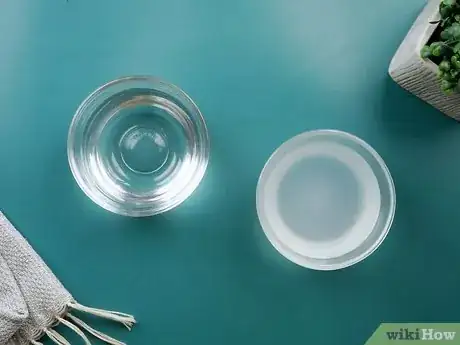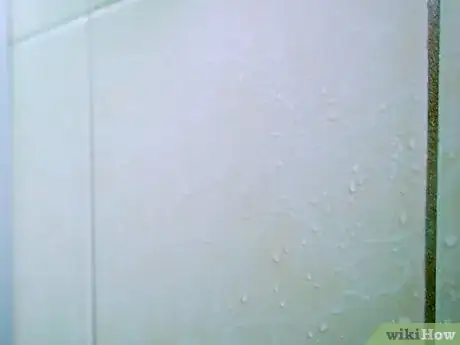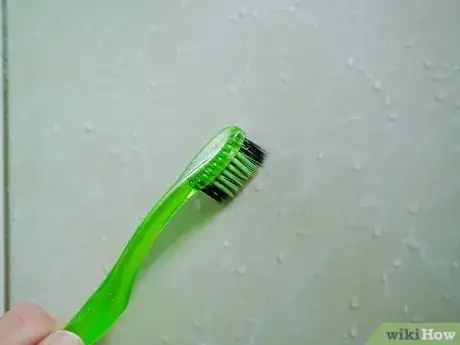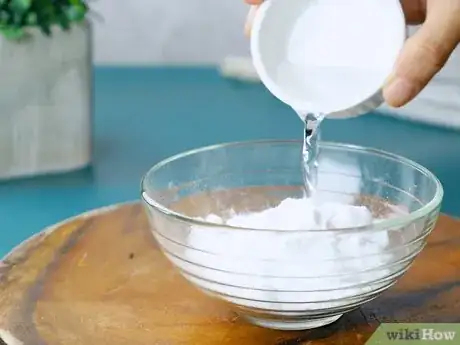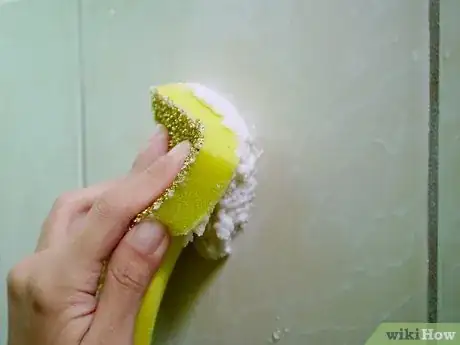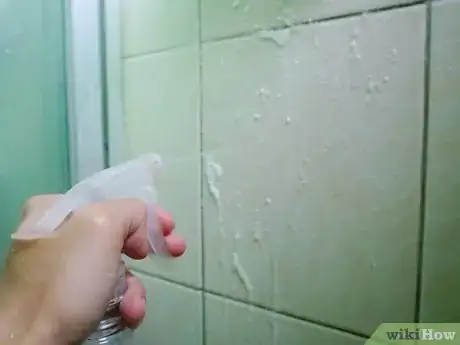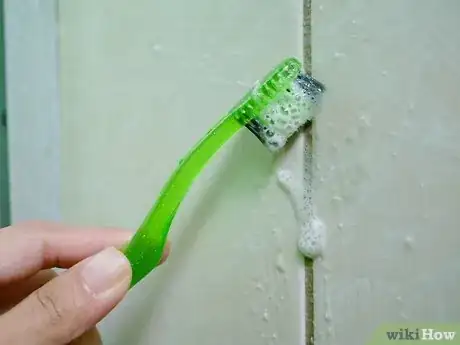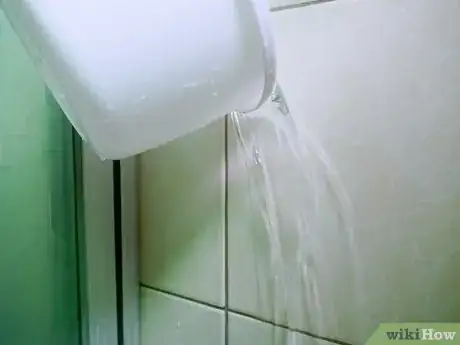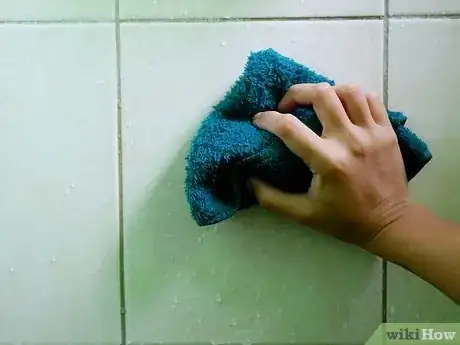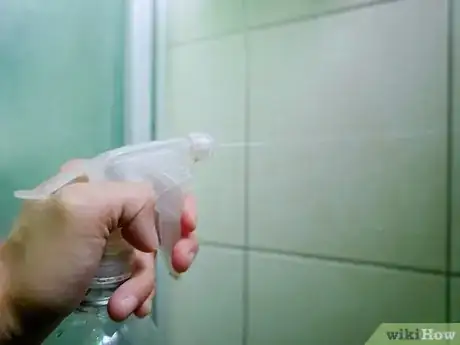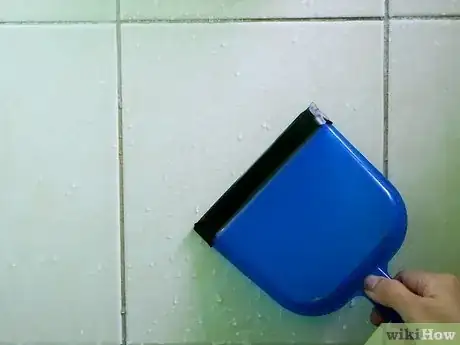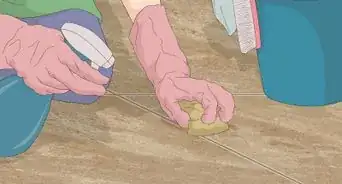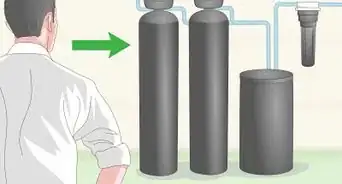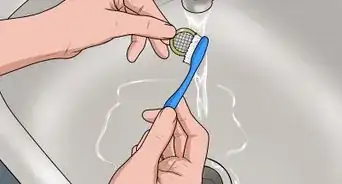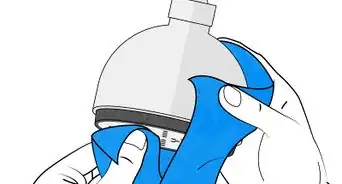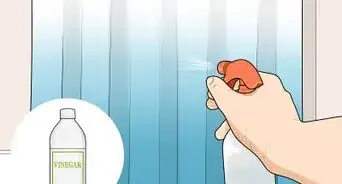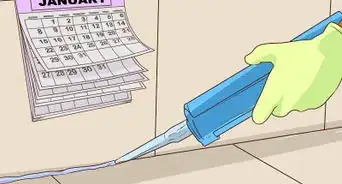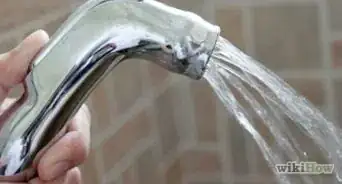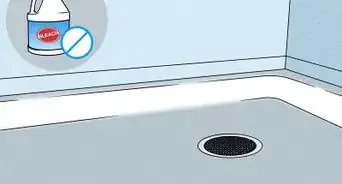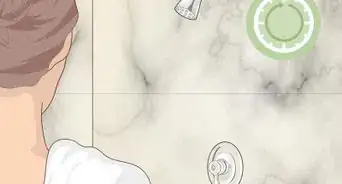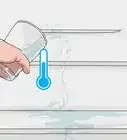This article was co-authored by Filip Boksa. Filip Boksa is the CEO and Founder of King of Maids, a U.S. based home cleaning service that helps clients with cleaning and organization.
This article has been viewed 188,292 times.
Cleaning your shower tiles is simple, but it may take some time depending on how dirty they are. You can use a commercial cleaning product to clean, or you can create your own cleaner out of a few ingredients that you likely already have in your home.[1] Start by pre-treating the tiles with a water-vinegar solution. Then apply a baking soda paste to the tiles and use a stiff bristle brush to scrub away scum, mildew, and grime. Prevent future buildup by drying your tiles four to fives times a week after showering.
Steps
Pre-Treating Soap Scum
-
1Run your shower on a high temperature. Let the hot water run for at least 10 minutes. The hot water will open the tile’s pores, making it easier to clean.[2]
-
2Mix 1 part vinegar to 1 part water in a bowl. Mix the ingredients together in the bowl until they are well-combined. Then fill a spray bottle with the solution.[3]Advertisement
-
3Spray the solution onto your shower tiles. Make sure to spray more solution onto dirtier areas, as well as the spaces in between the tiles, i.e., the grout.[4]
- Since you will be using this solution later on, do not use up all of the solution at this point, or make more solution as you clean.
-
4Let the solution set for five minutes. This will loosen the soap scum. Depending on how dirty your tiles are, you may need to let the solution set for 30 minutes or longer.[5]
-
5Scrub the soap scum. Use a stiff bristle brush or a grout brush to do this. This will further loosen the soap scum, making the tiles easier to clean.[6]
-
6Rinse with warm water. Do this by turning your shower on again. Use a lower temperature setting. However, the water should still be warm.[7]
- Alternatively, you can use a bucket or a pitcher to rinse the tiles.
Cleaning the Tiles with a Baking Soda Paste
-
1Mix 3 parts baking soda to 1 part water in a bowl. Mix the baking soda and water together until it forms a thick paste. The paste should have a toothpaste-like consistency. If the mixture is thin, then keep adding more baking soda until it reaches the desired thickness.[8]
- For tough stains, add hydrogen peroxide to the mix by substituting half of the water with peroxide. You can even add some dish soap.[9]
- Alternatively, you can use a tile cleaner to clean your tiles if you do not want to use a baking soda paste.
-
2
-
3Spray the paste with the vinegar solution. The vinegar will react with the baking soda, making it bubble. The vinegar helps the paste eat through the soap scum.[12]
-
4
-
5Rinse with warm water. Use a bucket or pitcher to rinse your tiles. Pour the water over the tiles until all the soap and residue are removed.
- You may need to rinse your tiles three to five times.
-
6Dry the tiles with a clean towel. This will prevent water from pooling in corners and crevices, which will help in the prevention of mold and mildew growth.[15]
Preventing Buildup
-
1Spray the vinegar solution onto the tiles. Do this after you finish showering two to three times a week. This will help keep your shower tiles clean for a longer period of time.[16]
- Keep a spray bottle labeled “shower spray” in your shower for easy access. If you have children, keep the bottle up high and out of reach.
-
2Squeegee your tiles. Do this by keeping a squeegee in your bathroom. Squeegee your bathroom tiles five to seven times a week after showering.[17]
- Make sure to squeegee corners and crevices.
-
3Dry your tiles with a towel. Keep a specially designated towel handy in your bathroom to do this. Dry your tiles off five to seven times a week after showering.[18]
Community Q&A
-
QuestionWill this method work, and is it safe for septic systems?
 LojjikCommunity AnswerYes, baking soda and vinegar are common household ingredients that are considered to be septic safe.
LojjikCommunity AnswerYes, baking soda and vinegar are common household ingredients that are considered to be septic safe.
References
- ↑ Fabricio Ferraz. House Cleaning Professional. Expert Interview. 16 August 2019.
- ↑ Fabricio Ferraz. House Cleaning Professional. Expert Interview. 16 August 2019.
- ↑ https://www.apartmenttherapy.com/how-to-clean-grout-138432
- ↑ Fabricio Ferraz. House Cleaning Professional. Expert Interview. 16 August 2019.
- ↑ Fabricio Ferraz. House Cleaning Professional. Expert Interview. 16 August 2019.
- ↑ https://www.apartmenttherapy.com/how-to-clean-grout-138432
- ↑ Fabricio Ferraz. House Cleaning Professional. Expert Interview. 16 August 2019.
- ↑ https://www.apartmenttherapy.com/how-to-clean-grout-138432
- ↑ Filip Boksa. House Cleaning Professional. Expert Interview. 20 August 2019.
- ↑ https://www.apartmenttherapy.com/how-to-clean-grout-138432
- ↑ Filip Boksa. House Cleaning Professional. Expert Interview. 20 August 2019.
- ↑ https://www.apartmenttherapy.com/how-to-clean-grout-138432
- ↑ Filip Boksa. House Cleaning Professional. Expert Interview. 20 August 2019.
- ↑ https://www.apartmenttherapy.com/how-to-clean-grout-138432
- ↑ http://www.maids.com/blog/5-steps-for-cleaning-tile-showers/
- ↑ https://www.apartmenttherapy.com/how-to-clean-grout-138432
- ↑ http://www.maids.com/blog/5-steps-for-cleaning-tile-showers/
- ↑ http://www.maids.com/blog/5-steps-for-cleaning-tile-showers/
About This Article
To clean shower tile, first soften up soap scum by running your shower on high heat for at least 10 minutes, then spraying the tiles with a solution of 1 part water and 1 part white vinegar. Let the solution sit for 5 minutes, then scrub the soap scum with a stiff-bristled brush. Rinse the tiles with warm water. For a deeper clean, mix up a paste of 3 parts baking soda and 1 part water. If the tiles are stained, substitute hydrogen peroxide for ½ of the water. Dip a sponge in the paste and scrub the tiles with it. Spray your vinegar solution on the tiles, then scrub them again with a stiff brush using circular motions. Rinse the tiles with warm water and wipe them dry with a clean towel. For more tips, including how to minimize buildup in between cleanings, read on!


